To kick off the new year we will take a look at the proposals submitted for the city’s LaSalle Street Reimagined initiative in The Loop. Announced in fall 2022, the program looks to revitalize part of the once bustling financial center with rising vacancy rates as companies relocate to newer towers with modern amenities, leaving behind their historical structures. Led by the Department of Planning and Development along with the Department of Housing, applications were due on December 23rd for the area relatively bound by W Van Buren Street to the south, N Wells Street to the west, and N Clark Street to the east.

Map of LaSalle Street Reimagined and of the street during an activation via City of Chicago
With a focus on affordable housing, the initiative will provide $196 million in financial incentives for the residential conversion of buildings within its boundaries, this will come from the untapped LaSalle Central Tax Increment Financing (TIF) District that stretches into West Loop Gate. Requirements for all of the proposals received were to contain a purchase and sale agreement for their individual properties and at least 30 percent of the units proposed to be affordable, a more in-depth breakdown can be found here. All together over $1.2 billion in projects are being proposed:

Image of 111 W Monroe Street via Hines
111 W Monroe Street
Developer Prime Group who also purchased part of nearby 115 S LaSalle to relocate the government offices from the Thompson Center, have crafted a proposal for the 23-story 1974-built structure that previously housed BMO Harris. Their plans include creating 349 apartments, of which 105 will be affordable, along with a hotel on the lower seven stories with a spa, rooftop pool, and a restaurant with an estimated cost of $180 million.
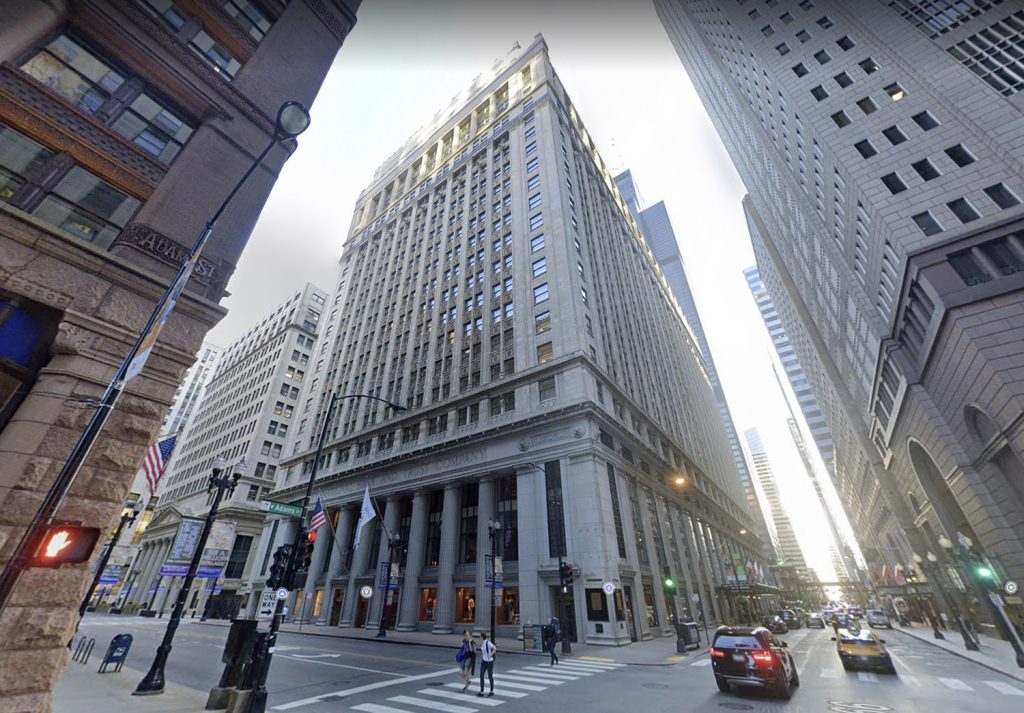
208 S LaSalle Street via Google Maps
208 S LaSalle Street
This nearby structure has competing bids, with the first coming in from the Prime Group who already led the conversion for the two hotels within it that include the JW Marriott which recently faced foreclosure. Their proposal for this site would turn part of the upper floors into 84 apartments with access to hotel amenities for the cost of $130 million. However the competing bid from Sims Property and Brinshore Development is proposing 102 units for the same space at a cost of $50.2 million.
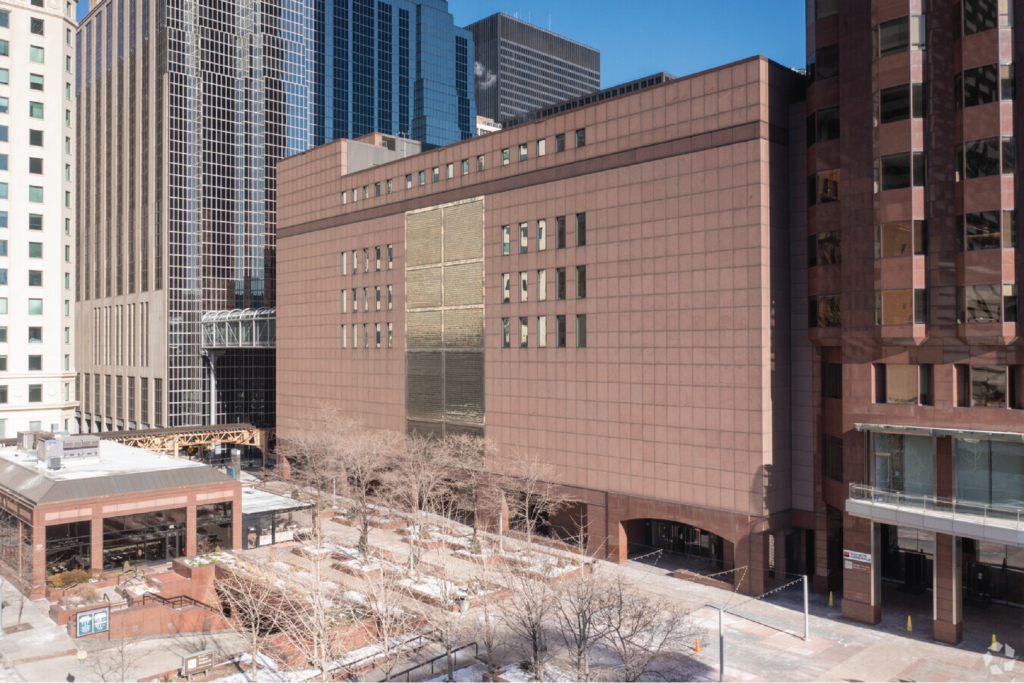
Image of 400 S LaSalle Street via LoopNet
400 S Lasalle Street
Developer Urban Resolve is proposing to redevelop the massive structure that once held the CBOE Global Markets headquarters and trading floors, with its plan focusing on student housing for the over 10 higher-education institutions within downtown. Plans include 226 beds for students along with a food court, fitness center, and a mental health center, however one of the more unique aspects will be a new e-sport arena with a total price tag of $104 million.
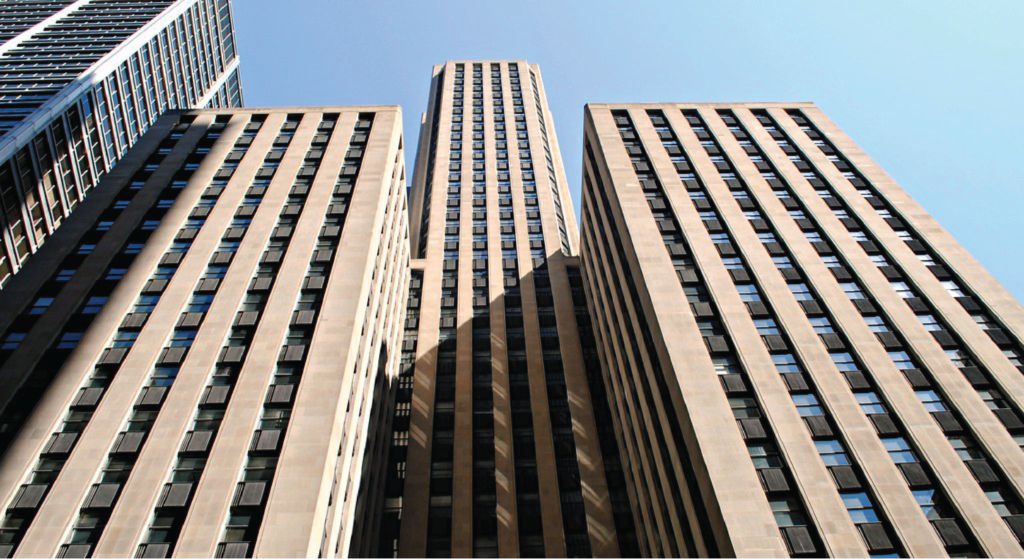
Image of 135 S LaSalle Street by Cragin Spring via Flirckr
135 S LaSalle Street
One of the larger projects, developer Riverside Investment & Development who helped develop the initiative is looking to turn the former 44-story, 1934-built Art Deco Bank of America tower into 430 apartments. Collaborating with the structure’s owner and Blue Star Properties, the plan seeks to create 80,000 square feet of mixed-use space at its base with a new lobby, retail, restaurant, event and gathering spaces, and potentially a grocery store, all for the cost of $258 million.
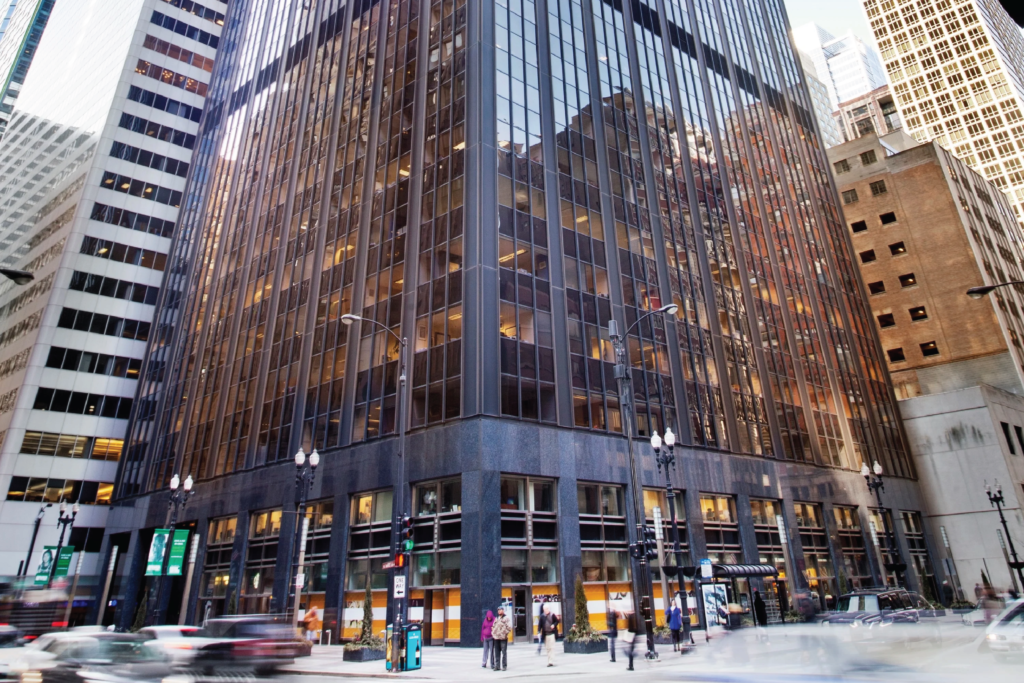
Image of 30 N LaSalle Street via Crain’s
30 N LaSalle Street
Building owner AmTrust, who also owns 135 S LaSalle Street, was recently hit by a foreclosure on the 44-story 1975-built tower and is partnering with investor American General Life Insurance on its $186 million conversion. Their plan would seek to create 432 new apartments within the building including additional ground-floor retail along with reimagined green spaces and seating along its main streets.
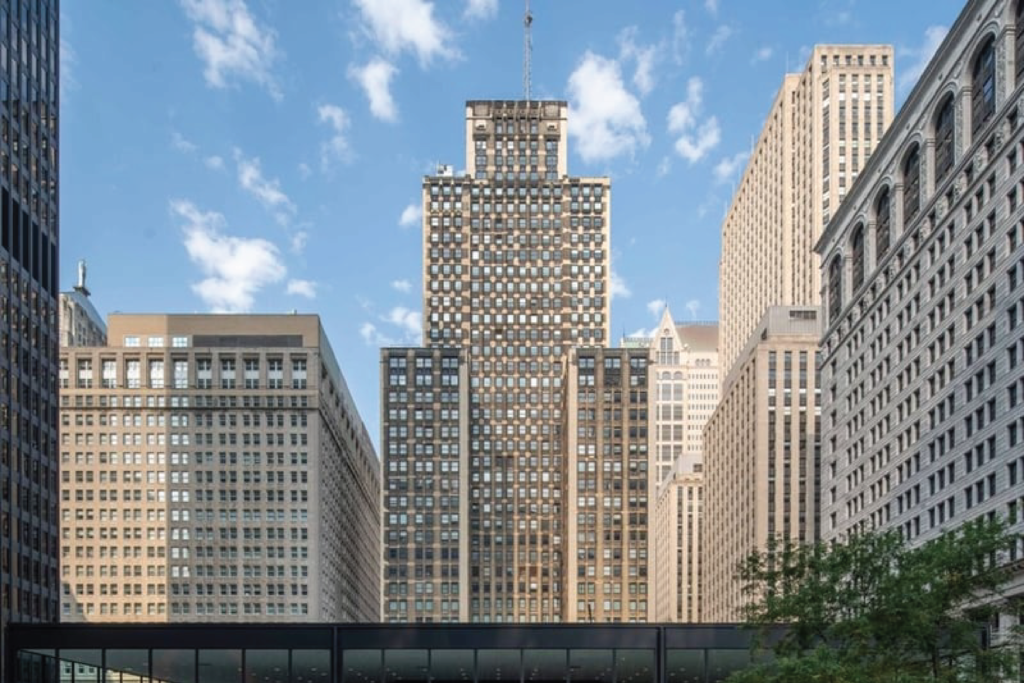
Image of 105 W Adams Street via Crain’s
105 W Adams Street
The 41-story 1927-built structure is easily seen from the new federal plaza and has been in disuse for many years, its tapering form now has two competing bids after multiple failed attempts in the past. The first is from Maven Development Group who wants to convert the upper 31 floors into 432 apartments for $167 million. The second bid comes from the Blackwood Group and Celadon Partners who want to build out 185 apartments, a two-level food market, and Stockyards Coffee House for $192 million.
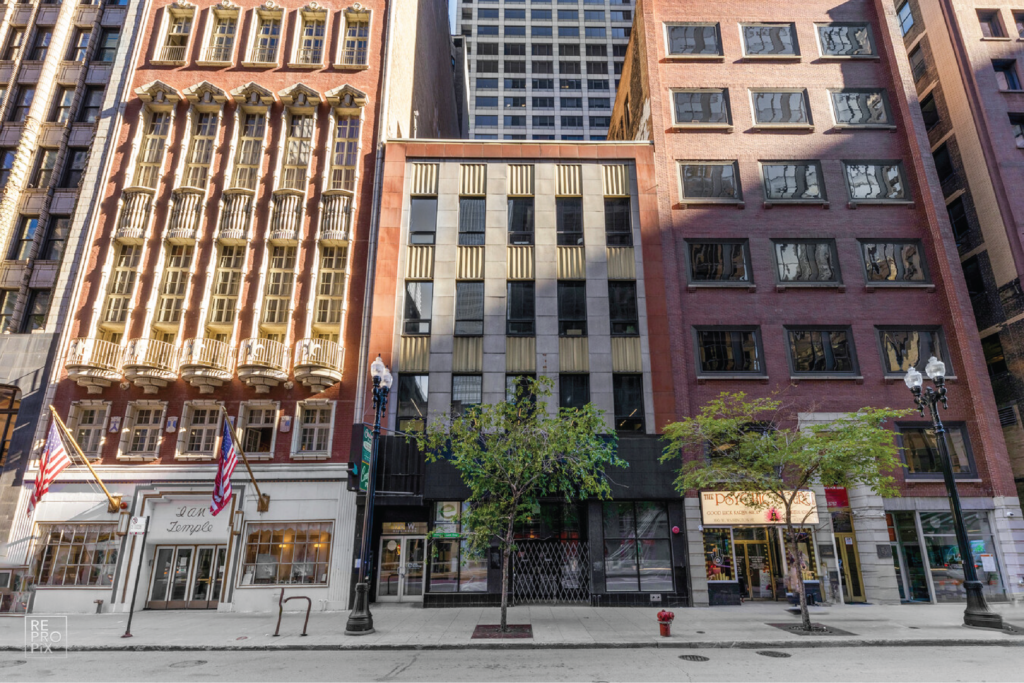
Image of 170 W Washington Street via LoopNet
170 W Washington Street
The final and smallest of all the proposals comes for the five-story 1930-built structure from its owners Scott Cochrane, Kevin Killerman, and Carmen Rossi who are hoping to execute $2 million worth of work. Inside they hope to create four apartments with new ground-floor retail and commercial spaces, most likely to hold a restaurant as one of the owners is a restaurateur.
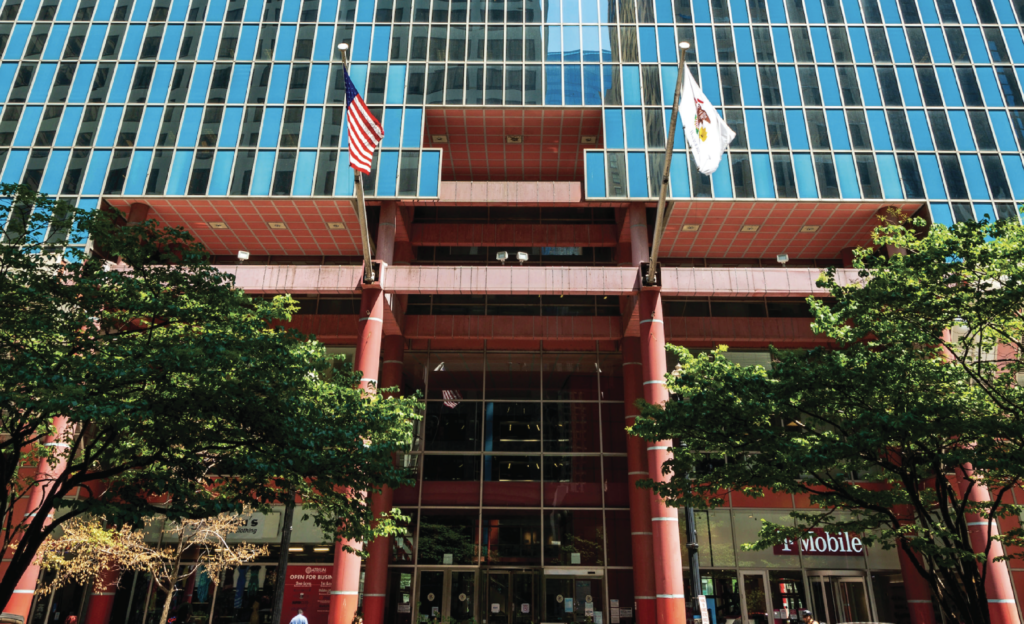
Exterior view of the Thompson Center via City of Chicago
With nearly 2,000 residential units proposed in total, more than the 1,000 Mayor Lori Lightfoot hoped to create, the proposals will also include over 600 affordable apartments. City officials will now review all of the bids properly and determine how much assistance each one will need, hoping to announce the first set of winners in the first half of 2023 to start construction in 2024 for those first approved.
Subscribe to YIMBY’s daily e-mail
Follow YIMBYgram for real-time photo updates
Like YIMBY on Facebook
Follow YIMBY’s Twitter for the latest in YIMBYnews

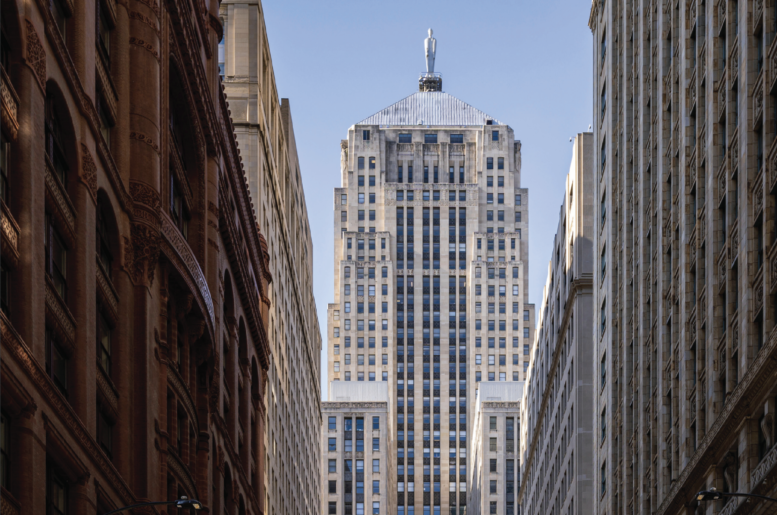
What does it mean to be “affordable”?
Would we really want that much subsidized housing in the Loop? That could potentially lead to bad outcomes for the core of the city, depending on the details
From the Sun-Times:
“The city’s guidelines say the Loop’s affordable housing should be limited to those earning up to 60% of the area’s median income. Under current federal housing standards, the income limit for a family of four would be $62,520. Some developers contend a more reasonable limit for the Loop would be 80% of the median income, or $83,350 for the same family.”
So-called affordable housing is a huge scam, and it’s been holding the city back.
Cut the taxes, de-regulate, and overall, make it easier for investors to build, and before you know, you’ll have the real affordable housing.
How’s affordable housing holding back the city? Have you not noticed the amount of development? This isn’t Libertarianville… and it’s really not about regulation either.
The developers do not need to take the city’s money and can develop the properties for market rate renters. TIF money is intended to revigorate blighted areas and redevelop abandoned property. This is what the projects intend to do. Many believe the community should benefit when city money is handed to developers. The affordable housing means essential workers in the Loop, such as those in food service, health care, and building maintenance can have a place near work to live. If Chicago did not provide housing for these workers, we would end up with massive homelessness like Seattle and San Francisco. These cities enjoyed a massive infusion of highly paid tech workers, driving up housing prices, and little effort was made to increase housing supply.
You Are InCorrect. The workers wouldn’t be homeless without housing in loop. They currently live in low income areas.
There’s nothing wrong with people living where they can afford.
This is great. I hope most of these get approved and start construction in less than 12 months. I would love to see this area revived and bustling with people, stores and all different activities. Hopefully, this is just the beginning and a lot of the other buildings organically get developed as the amount of buildings available becomes less available. To me, living in the loop is one of the best spots to live with all the L lines nearby. Another great thing is all of the empty office buildings will start to come off the market to lower the amount vacant space in the office market and submarket and hopefully create more of a demand to build more office towers elsewhere.
Low cost rentals. What could go wrong?
Just because somebody doesn’t make a lot of money doesn’t mean they are lesser human beings, with lesser potential, or lesser aspirations. We have all needed a hand up at some point in our lives.
If they putting all these affordable units 😤 I can imagine who will be leaving there and unfortunately will become Detroit. No one with money will buy or rent in the Loop.
Your comment is beyond idiotic with no basis in reality. A pathetic comparison with that dog whistle. Who exactly can you imagine will be living there? When was the last time you were in Detroit?
Great idea..BUT who is it really going to benefit? The term ‘low income’ is deceiving as developers and/or owners will not cater to individuals who cannot pay the rent. Chicago would be an amazing place to live, however, in my opinion, only the ‘rich’ would be able to afford to live there not to mention to make use of the ‘amenity’ they will offer. IF low-income families cannot afford to live in a 4bedroom house, how will they support and live in a two bedroom apartment downtown Chicago? I can’t imagine what that would rent for in this economye we are living in today. CEOs etc…will be the ones living downtown..finding a hide away from their million dollar properties they own in Wilmette and Winnetka.